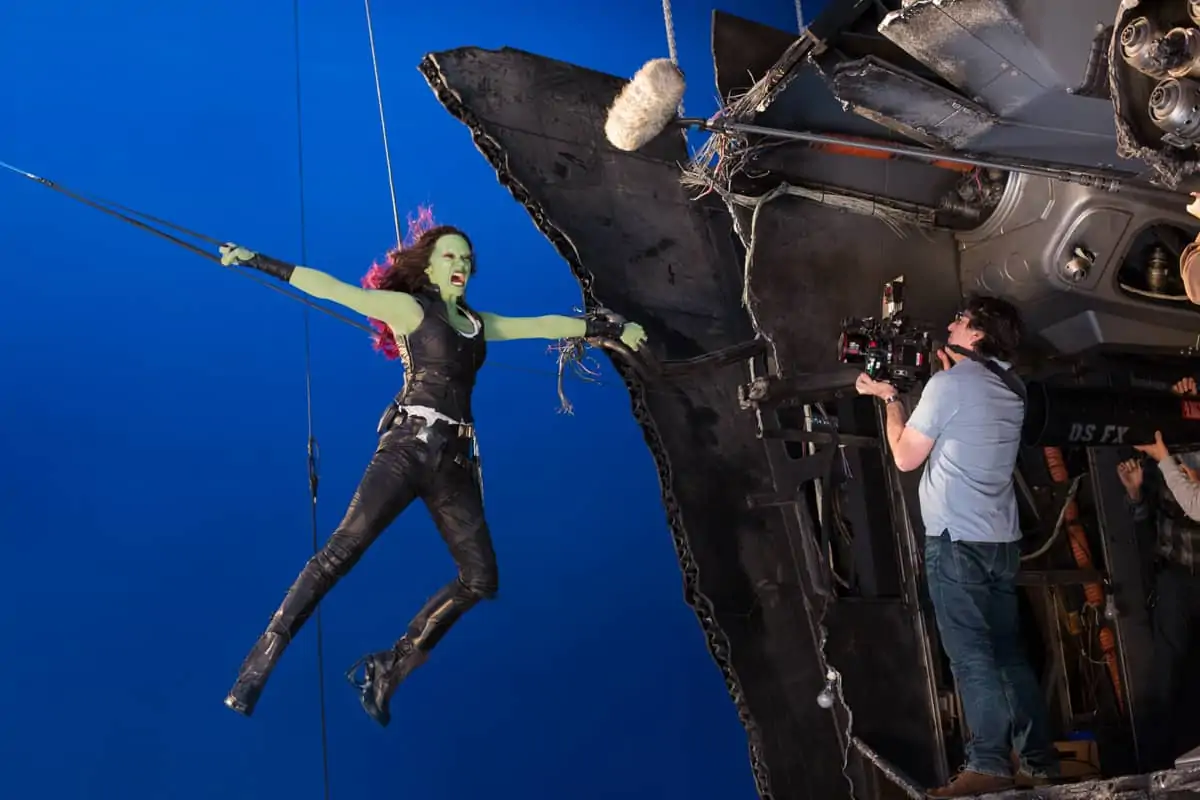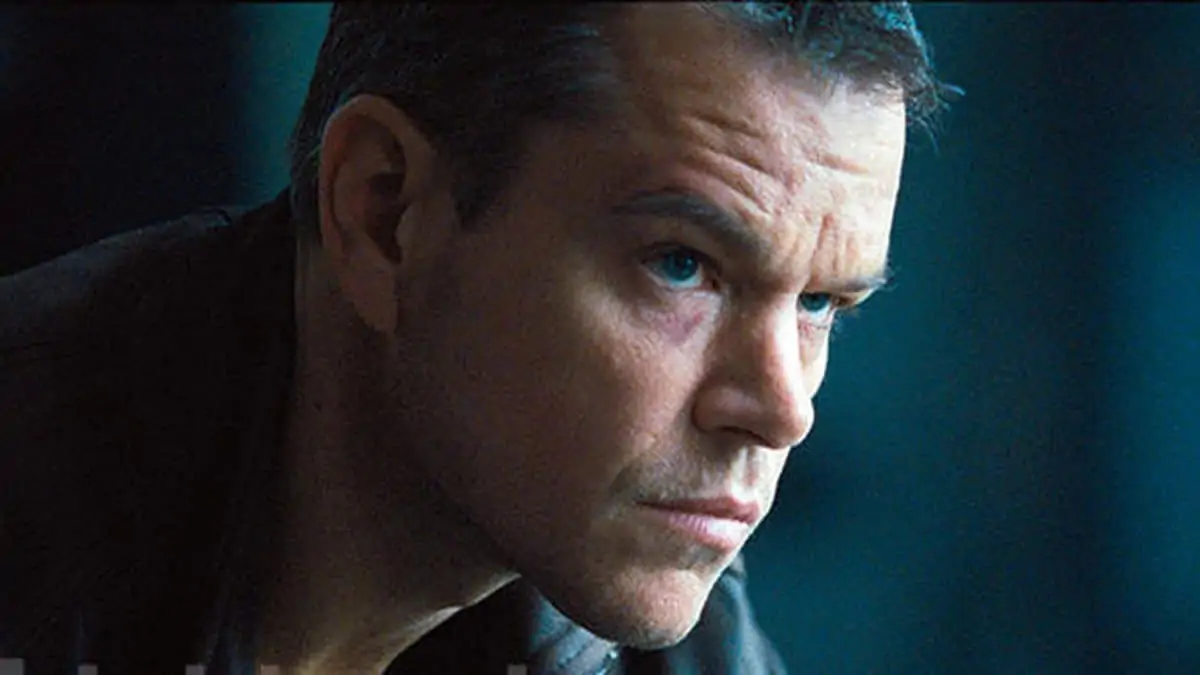Crazy space opera
Cinematographer Henry Braham BSC dissects Guardians of the Galaxy Vol. 3, including the film’s mocap magic and keeping the characters mobile.
Back for a third, and possibly final act, Marvel’s beloved motley crew assemble for another candy-coloured galactic romp that carries a darker storyline than fans of the previous chapters may expect. In Guardians of the Galaxy Vol. 3, the group unite to prevent their genetically enhanced friend Rocket from being exterminated by a Dr Frankenstein-type villain out to accelerate evolution with animal experiments.
With a cast including Chris Pratt, Zoe Saldana, Dave Bautista and Karen Gillan, principal photography began in November 2021 at Trilith Studios (formerly Pinewood) in Atlanta, Georgia, under the working title Hot Christmas. Director James Gunn recalled Henry Braham BSC to resume the work they began on Vol. 2.
“Guardians is a crazy space opera but it is still fundamentally about the human condition,” the cinematographer says. “The space element is the spectacle, the wit and the fun but the core of the film is about family and especially about dysfunction.”

The combination of action-adventure with a deeply personal human story was the starting point for discussions with Gunn about visuals. For Vol. 3 they selected references from Southeast Asian cinema, such as Park Chan-wook’s Oldboy.
“Because we wanted to make this a human story, we have to ensure we tell each character’s story very clearly, and particularly in the action sequences.”
This principle informed Braham’s intent to make the camera present in every scene. “There are different ways of doing this,” he explains. “You can shoot on a long lens but by definition you are observing the scene. Or you can put the camera amongst the scene as we did here. If the camera is very present in the scene it makes a massive difference to the way performances are photographed and to the intensity of performances.”
While the argumentative and teasing interplay between the core characters is enriched by knowledge of events in previous chapters, the emotional heart of Vol. 3 is a backstory involving Rocket’s friendship with a trio of CG animals, an otter, a rabbit and a walrus.
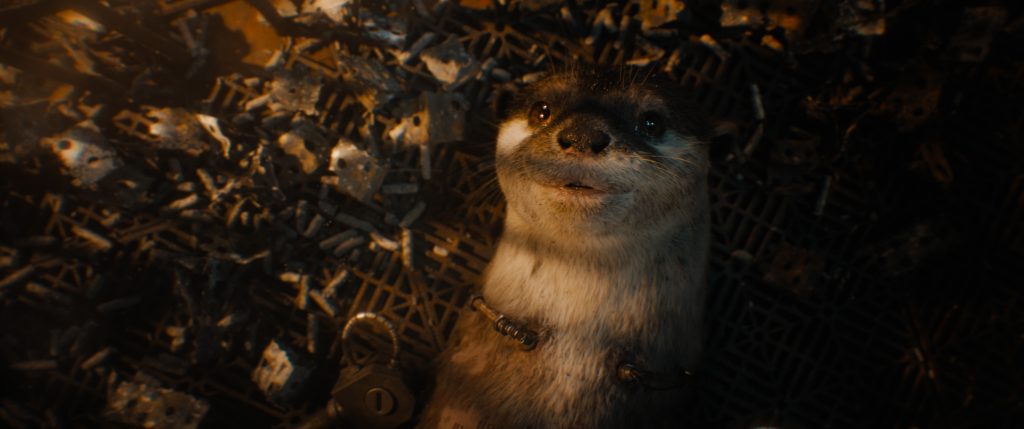
Braham explains that these scenes began life with actors performing on a mocap stage. The performance of Rocket is by Sean Gunn with Bradley Cooper’s vocal performance added later.
“You’d shot list the scene but until you work with the actors in mocap you don’t understand exactly where the camera should go. Sean’s performance is remarkable and is baked into the animation. He assumes the physicality of Rocket which is very helpful to me in understanding how the camera needs to move in relationship to what Rocket is going to do.”
The tone and pace of scene involving the CG animals is taken from the mocap performances and from the way the physical set has been lit in the background plates.
“With Lylla the otter we know what size she is and James will have a view about where she will be in relation to everything and we’ll line that up with a proxy.”
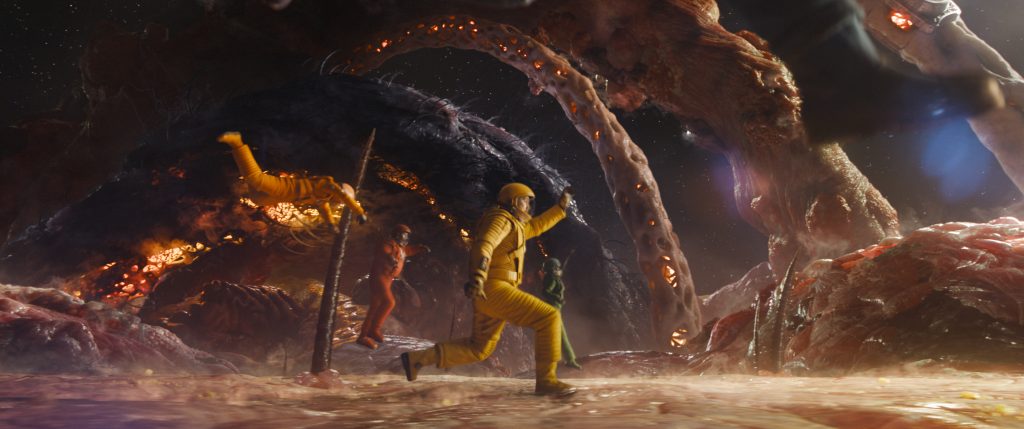
Mobile mentality
As in previous collaborations with Gunn, Braham is keen to support his director’s desire to keep the characters mobile. That requires a mobile camera and, given the scale of the sets for Guardians, was not something they felt would work inside an LED volume.
“We looked at virtual production (VP) but for us the principal thing is the size of the stage is very small in comparison to shooting on giant sets. The Guardians’ spaceship is four storeys high, for example, and there’s a huge set build for the Knowhere town. Since James is interested in having mobile characters you need a lot of space for that movement. In addition, at the point when we were planning the movie, the VP technology didn’t handle fast pans so well. There would be a lag between camera and virtual background.”
Ninety percent of Guardians Vol. 3 is shot stabilised handheld with the main storytelling camera operated by Braham. He feels this is the only way to achieve the accuracy and positioning of a camera that is close to the actors.
“Normal ways of mounting the camera are very intrusive,” he says. “However brilliant the people are operating [a rig, dolly or crane] tracking actors who have freedom to move within a scene will always be delayed by the physics of momentum. Therefore, you become very aware of the camera and it’s why we traditionally tend to back off a bit on longer lenses. When you go up front and personal and the camera is connected to the actors and their eyelines you have to be much more precise about how the camera moves.”
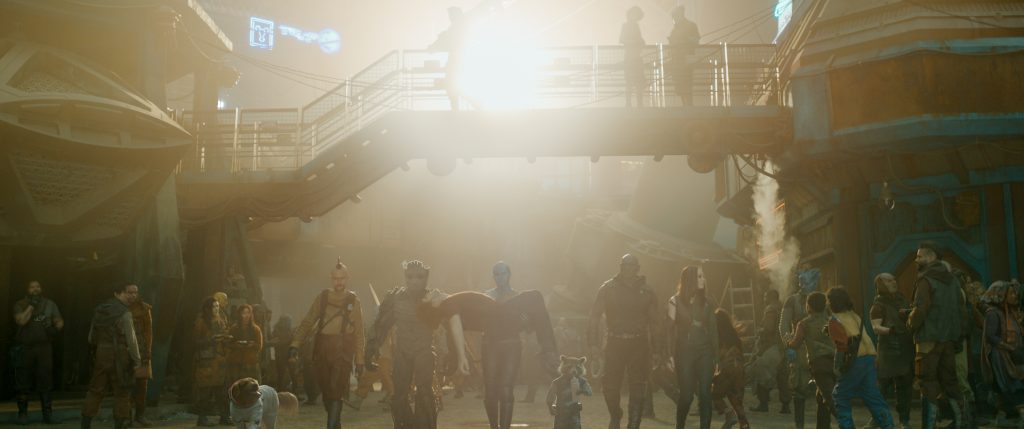
Notably, Guardians of The Galaxy Vol. 2 was the first feature to be shot at 8K resolution, on the RED Dragon VV sensor inside the Weapon camera. The filmmakers retain that spec, shooting 8K VV but this time have changed up to RED V-Raptors paired with the Leitz M 0.8 line of lenses (21mm to 90mm). Braham puts the decision in context by explaining why he shot Vol. 2 with RED.
“At the time, Marvel were keen to shoot more of their movies on digital large-format cameras like Alexa 65 which does produce stunning pictures, but for me the camera was too big and that was contradictory to what James wanted to do. Jarred Land (RED president) showed me a prototype of what was to become the 8K VistaVision camera the size of a Hasselblad. RED was great at welcoming our feedback to develop it to shoot Vol. 2.
“When it came to Vol. 3 there had been an evolution in technology. James always wants the tools to achieve his vision but also to improve on it, so the Raptor was the natural choice.”
In the interim, Braham had lensed Gunn’s Suicide Squad (2021) using an array of Ranger Monstro 8K VV and Weapon 8K VV and The Flash, also part of the DC Extended Universe, for director Andy Muschietti on Monstro.
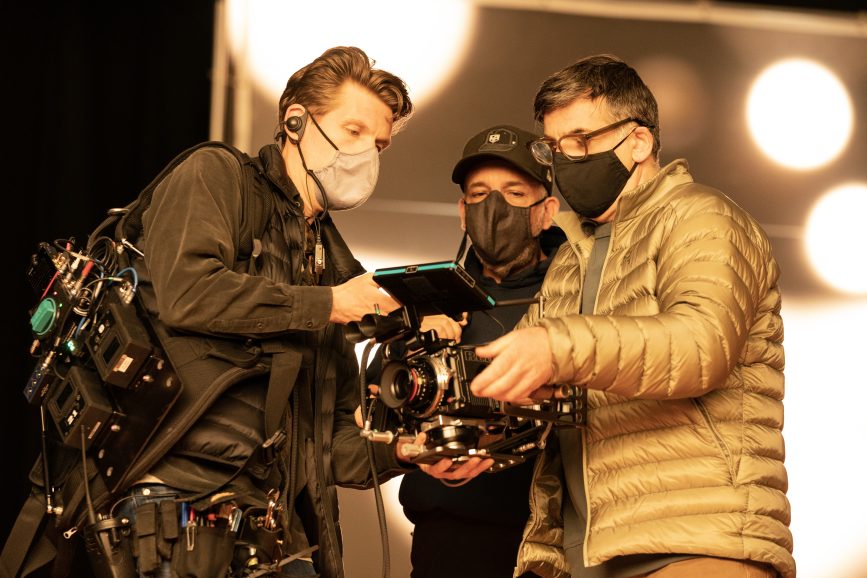
“The V-Raptor has subtle differences over Monstro,” Braham says, “with one of the main ones being the capability to shoot a medium format negative at 120 frames. James likes to shoot high speed to have the option of speed changes or adjustments or as an aid to later manipulate the image so V-RAPTOR was a significant step forward in that regard.
He continues, “All digital cine cameras have spectacular picture quality. Quite frankly so does your iPhone. It doesn’t matter to me if it’s 4K, 10K or 20K. What is interesting is the physicality of the camera and the geometry of the lens in relation to the image size. That matters if you are interested in putting the camera close and wide to somebody’s face. It’s why the geometry of the lenses to the VistaVision negative area is very favourable. It means the focus drops off very beautifully in the background in the way that if you were shooting on a medium or wide lens on 35mm the background would still be sharp.
“The team at RED understood the importance of that. In building the RED VV camera they took existing lenses that cover the medium format negative and asked ‘what is the optimum area of the lens we can use?’ and then they designed the camera to that. That’s a very different way of thinking and why it has a very different photographic effect. Most of Guardians Vol. 3 was shot on wide lenses very close to people’s faces, which in more traditional formats you just can’t do.”
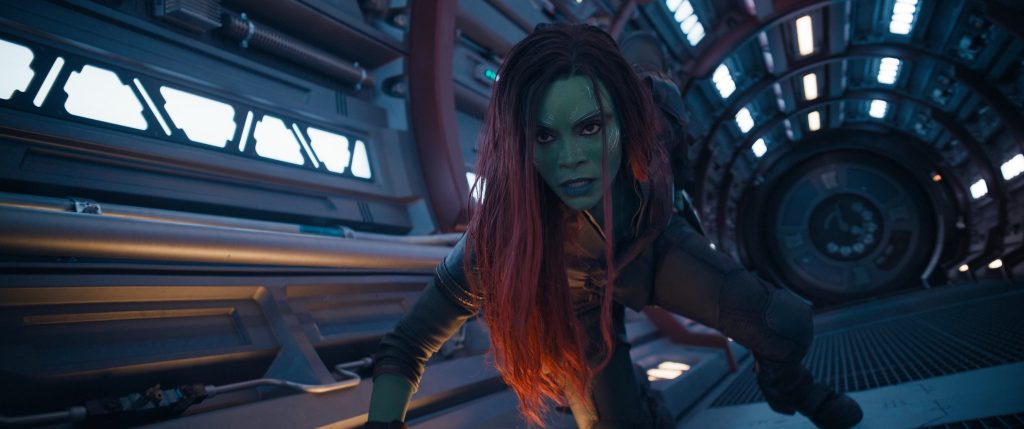
Adams’ influence
Braham shoots digital the same as he would with film – using Ansel Adams’ zone system and a light meter to determine the exposure, with no on-set monitoring.
“Photography boils down to a few essentials,” he says. “You need to know to see things. You need to know how to develop a visual idea and then how to realise that. Photographically the best way to realise the visual idea is to be very precise about exposure.
“Ansel Adams figured it out in 1938. It’s so simple. If you understand the exposure values of everything around you, you can make creative choices. Although digital cameras have phenomenal exposure range – cinema projection is limited in comparison – so you have to think about how your film is projected and make informed choices about exposure.”
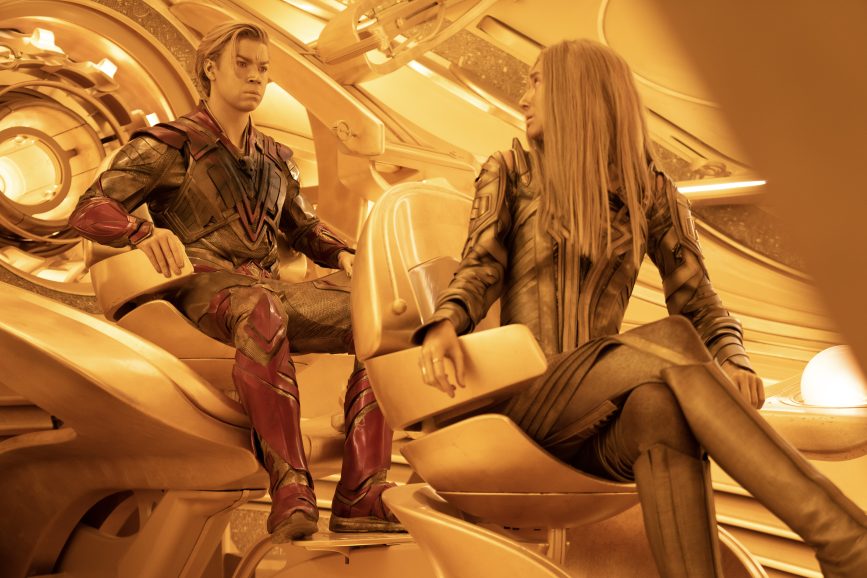
Guardians Vol. 2 was framed for a 2.35:1 release, with additional scenes also shot 1.90:1 for IMAX theatres, but Vol. 3 goes further in having versions delivered in various aspect ratios to maximise screen real estate.
Some have 45 minutes of the two-and half-hour film opened up to a flat 1.85 aspect ratio while the rest of the movie is letterboxed to 2.39 to match the mood and impact of the scene.
“There was a time when if you were shooting IMAX you had to use a massive IMAX camera but because we now have IMAX certified cameras like the V-RAPTOR which are the size of a Hasselblad the options really open up for you. In the end we decided to go the 2.40 route to retain consistency with the previous two movie as part of a trilogy but the truth is you need to be framing for both 2.40 and 1.85 all the way through.”
Braham’s schedule is busy, and he is booked repeatedly by directors such as Gunn and Doug Liman with whom he just shot Road House and The Instigators.
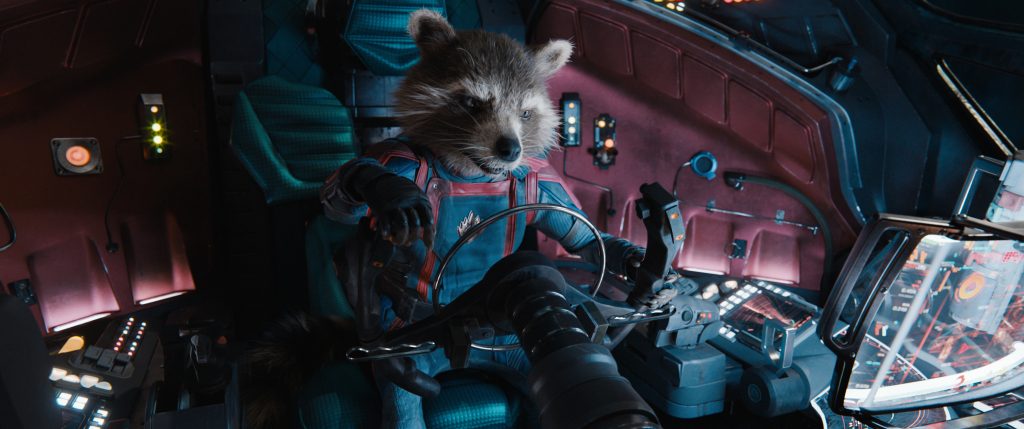
“There’s a misconception that cinematographers do the same thing on each picture,” he says, “when what is I think is the most interesting process is working out what ideas are specific to each movie. Not only is every director and every movie different but each film with the same director is different. One of the hardest things to do is to divorce myself from the last show and apply the intellectual rigour to start again with a clean sheet of paper.”
That was the case when Braham found himself with less than a month turnaround between The Flash and jumping onto Guardians.
“My process is to respond to the material and to drill into the director’s mind and join those two things together. Some directors are very specific and can articulate this and others are less so but have a very clear idea in their heads. The function of a cinematographer is to translate a director’s vision and personality onto screen.”

To ensure that their shared vision is cemented in the final picture, Braham advises having a clear and consistent system of communication that establishes the visual intent from the start.
“This is baked into dailies so that if someone is working on the image in New Zealand, London or LA everybody knows what the parameters are and what the intent is. You can’t micromanage everything but you can set the ground truth. It’s why, when we came to the colour grading with Company 3’s Stefan Sonnenfeld for Guardians Vol. 3, the process was very smooth. Everybody has followed the same guidelines all along, so all the pieces of the jigsaw came together. That is part of the conception of any film and to be honest the same approach is very helpful to any size of movie.”


